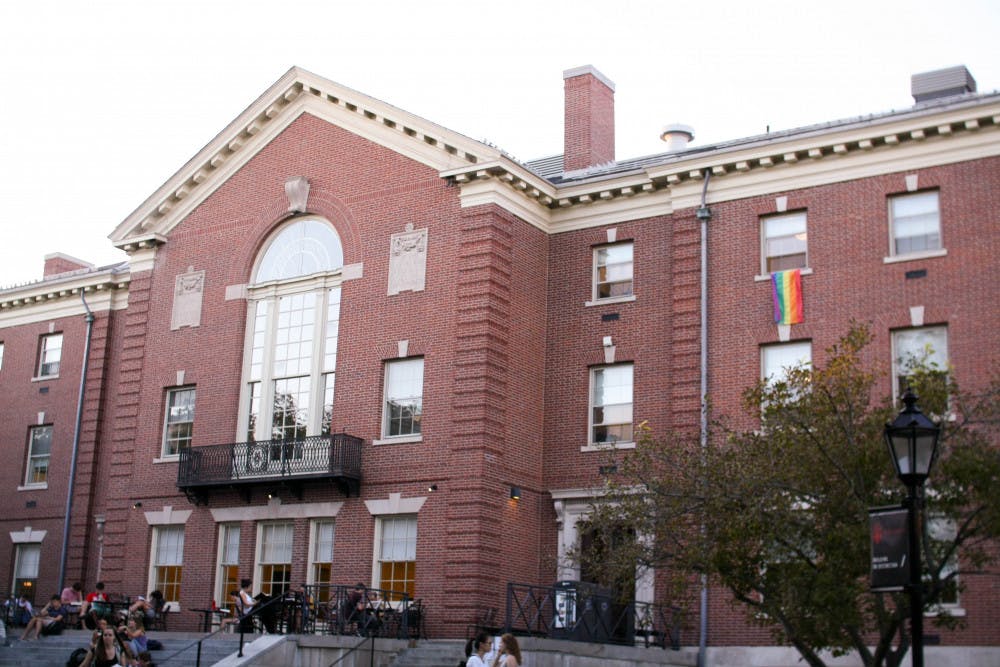“Raise your hand if you’ve ever heard that bisexuality is a phase.”
Robyn Ochs began her presentation, “Understanding Bisexuality: Challenging Stigma and Reducing Disparity among College Students,” Thursday evening with a declaration of pride: She is celebrating 40 years of identifying as bisexual this September.
“So let me be Exhibit A,” Ochs said.
Ochs, an activist, author and educator, centered her presentation on the people she refers to as bi+: those who do not identify with the sexuality binary and use terms like bi, pan, queer, heteroflexible, asexual, questioning and no label, to name a few.
Visibility of bi+ people is one of the most prominent issues people in that identity group face, Ochs said, so she presented a wide array of data that demonstrated how bi+ people exist in society today. Notably, a lot of large research projects lump people under the lesbian-gay-bisexual umbrella and do not disaggregate data for people who only identify as bi+, further diminishing their visibility, she said.
Data indicate that bi+ youth experience lower levels of happiness and higher rates of drug and alcohol use than both their straight and gay or lesbian peers. Bi+ youth also report having fewer adults with whom to discuss their sexuality and related experiences and are less likely to be out. The lower rates of being out extend into adulthood, Ochs noted.
She attributed these struggles to minority stress, or stress experienced by people in marginalized groups due to hostile social environments. Those feelings of stress, anxiety, panic and reduced happiness are “not caused by being who you are, but by being who you are in the hostile social environment,” Ochs said.
Ochs also noted that talking about bisexuality is impossible without discussing intersectionality: All of these identities interact in “complex and compounded ways,” which “limit the size of our safe spaces,” she said.
Natalie Chapkis ’18, who identifies as bisexual and biracial, noted “a lot of parallels between bisexuality and biraciality.”
Ochs asked attendees to share examples of stereotypes projected onto the bi+ identity group.
Audience members suggested a slew of derisive misconceptions: “They don’t exist.” “They don’t love.” “Sex addicts.” “Too afraid to admit they’re gay.” “Doing it for the attention.” “Perverts.” “Untrustworthy.”
“Tourists in gay town,” Ochs added. She proceeded to share her own path toward identifying as bisexual. In her first semester of college, she fell in love with a woman and proceeded to reconcile herself with what bisexuality constituted for her.
But Ochs did not come out about her identity for another five years, largely because she was deterred by the rhetoric she heard among her gay and lesbian friends.
“I don’t think I realized how much my silence cost me until it was gone,” Ochs said of the relief she felt after she finally came out to a coworker.
But the negative rhetoric persisted, and Ochs sees that “these stereotypes are created by limitations in other people’s thinking.”
Ochs attributed popular skepticism about bisexuality to five notions: visibility, or that bi+ people are hard to see because the default assumption is that everyone is straight; distortion, or that a perverse relationship with sex and sexuality exists in the United States; binaries, or that typical thinking orients around extremes; ignorance, or that people have not received comprehensive education on LGBTQ issues; and horizontal hostility, or that bi+ people are often not recognized within the LGBTQ community.
Solutions to these issues include scientific research on human sexuality, more inclusive language, supporting people in and out of the community and advocating an inclusive curriculum on bisexuality. Brown currently does not have a single course with the word bisexuality in its title or course description.
Despite these challenges in the external world, Chapkis noted how she “felt a lot of love” and a really strong sense of community in the room.
Likewise, Soo Joo RISD ’18 liked the definition of bisexuality Ochs shared, noting that she was excited by the prospect of more people understanding bisexuality.
“I feel like more people will begin to identify” beyond the sexuality binary, Joo said, adding that the change would “have so much power to destroy social constructs.”





